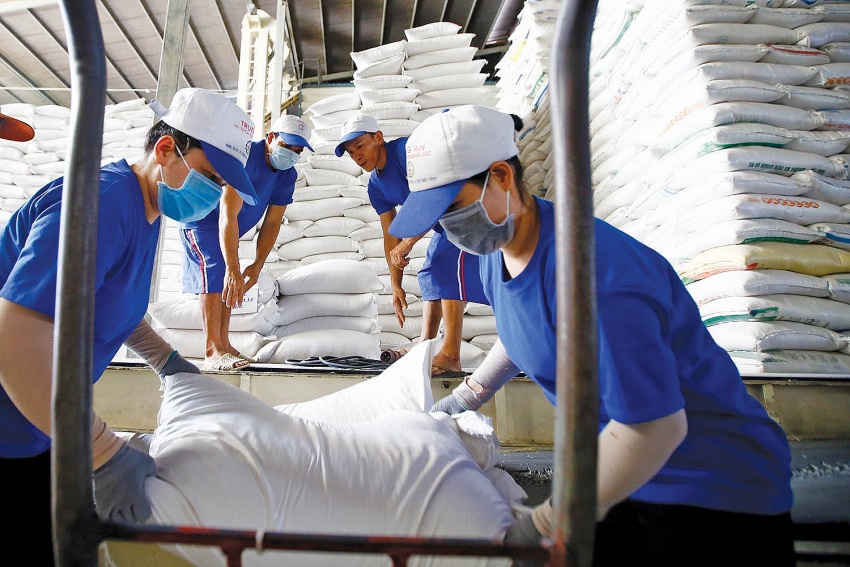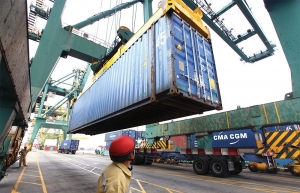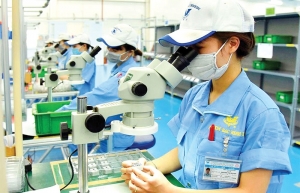Taking advantage of EVFTA for imports
After the European Union–Vietnam Free Trade Agreement (EVFTA) has come into effect for more than two years (from August 1, 2020), the machinery, equipment, and materials imported by DKNEC Group JSC from some EU member markets have an advantage of slightly reduced import duties.
 |
Dinh Van Hien, president of the Board of Directors and general director of DKNEC Group, said that the import tax on components and assembled equipment was reduced slightly thanks to the EVFTA coming into effect. Before that, this tax was very high, about 5 - 15 per cent, depending on the type of components.
Tax rates continue to drop sharply, especially from the third year after the EVFTA. From 2022 to 2027, the special preferential import tax will be reduced from 10.2 per cent to about 1 per cent.
“Thanks to the EVFTA, businesses are accessing equipment and solutions to improve production, reduce product costs, and improve competitiveness. The EVFTA also helps create a favourable condition for businesses to connect with partners in 27 EU countries with advanced technology,” said Hien.
Data from the Ministry of Industry and Trade shows that the goods with sharp import growth from the EU in the first two years of EVFTA implementation are machinery, equipment, electronic components, and raw materials.
Do Huu Hung at European-American Market Department said that the EU's tariff incentives in the EVFTA have significantly contributed to helping Vietnam enterprises improve their competitiveness and expand their market share in the EU. Enterprises also have opportunities to access high-quality EU goods.
From the results of surveys and discussions about the EVFTA, Hung said that businesses had taken advantage of the EVFTA's relatively effective advantages in importing equipment, machinery, and raw materials from the European countries serving to produce export goods.
According to the report "Vietnam after two years of EVFTA implementation from a business perspective" published by the Vietnam Chamber of Commerce and Industry and FNF Institute in November, 41 per cent of more than 500 surveyed enterprises in the country benefit from the EVFTA. The most common benefits were preferential tariffs for import-export goods, and positive effects in increasing orders, revenues, and profits.
Notably, in implementing the EVFTA with the "fastidious" EU market, export businesses and industries are forced to improve quality to meet the requirements of importers. This is considered a motivation for Vietnam’s enterprise to shift its export structure to higher value-added commodity groups.
With the immediate elimination of 85.6 per cent of tariff lines between Vietnam and the EU, many Vietnamese businesses and industries are expected to benefit by reducing the cost of importing production materials. (source: baodautu.vn)
 | EU keen to cement obligations in EVFTA Vietnam and the EU are increasing trade and investment ties backed by a bilateral free trade agreement, with the EU committing to assist in deployment of the deal despite current geopolitical tensions. |
 | Fulfilling the roadmap for a fruitful EU trade future Bilateral trade between the EU and Vietnam has been advancing in the right direction since the EU-Vietnam Free Trade Agreement took effect. Bernd Lange, chairman of the European Parliament’s Committee on International Trade, spoke with VIR’s Hara Nguyen about the progress so far and the further advantages ahead. |
 | EVFTA advantages threatened by tough competition Although Vietnam is hoping for stunning growth in seafood exports, particularly in the likes of basa fish and shrimp, the nation’s share in the EU market and utilisation of its trade deal with the bloc remain under some pressures. |
 | Vietnamese businesses trained in EVFTA’s Rules of Origin Vietnamese businesses had the opportunity to improve their knowledge on Rules of Origin (ROO) and receive useful information from experts to take full advantage of the recent European Union–Vietnam Free Trade Agreement (EVFTA) at a workshop organised by the ARISE+ Vietnam Project. |
 | EVFTA gains begin to blossom for Vietnam Vietnam and the EU, home to a market of nearly 450 million people, are witnessing a rise in their trade and investment cooperation fuelled by a bilateral free trade pact, which is offering a slew of benefits since it was established a couple of years ago. |
What the stars mean:
★ Poor ★ ★ Promising ★★★ Good ★★★★ Very good ★★★★★ Exceptional
Related Contents
Latest News
More News
- Global partnerships key to Vietnam’s IFC development (December 26, 2025 | 16:18)
- Vingroup pulls out of bid to invest in North-South high-speed railway (December 26, 2025 | 11:42)
- Strengthening supply chains through trade promotions and customs reform (December 24, 2025 | 14:00)
- PM orders investment model for North–South high-speed rail (December 22, 2025 | 17:43)
- LS Eco Energy to invest in Vietnam rare earth sector (December 22, 2025 | 17:31)
- Government moves to establish International Financial Centre (December 21, 2025 | 21:00)
- Vietnam's IFC to target global investment flows (December 21, 2025 | 18:00)
- Two national hospitals expand capacity with new facilities (December 20, 2025 | 09:00)
- Ha Tinh breaks ground on major Vingroup industrial and energy projects (December 19, 2025 | 18:24)
- EVN launches major power infrastructure projects nationwide (December 19, 2025 | 18:17)

 Tag:
Tag:





















 Mobile Version
Mobile Version